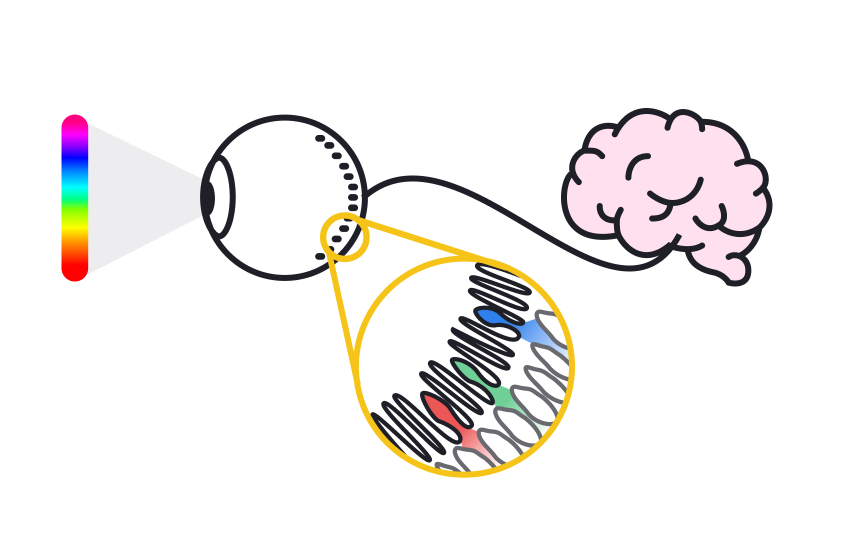How we see color
We are able to see color because of photoreceptors in our eyes. There are two types of receptors involved in sight:
- Rods work at very low levels of light. We use these for night vision because even a few bits of light can activate them. Rods don't help with color vision, which is why we see everything in shades of gray at night. Animals that see well in the dark have many more rods than humans.
- Cones need a lot more light, and they can see color. We have 3 types of cones: blue, green, and red. The brain integrates the signals sent from these cones to allow us to see millions of colors. For example, we see yellow when green and red cones are stimulated, but the blue cones aren't. When all the cones are stimulated equally, the brain perceives the color as white.[1]

